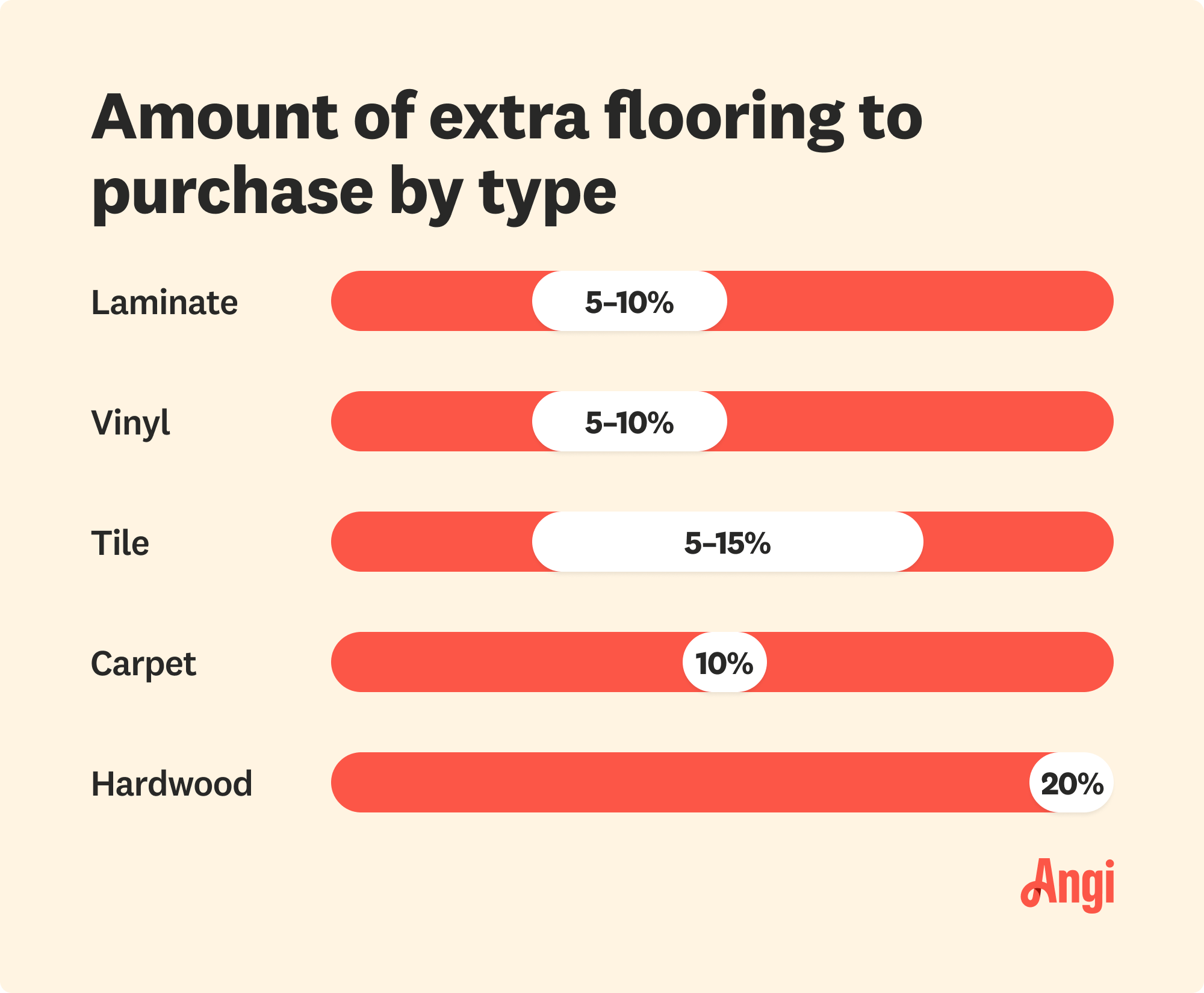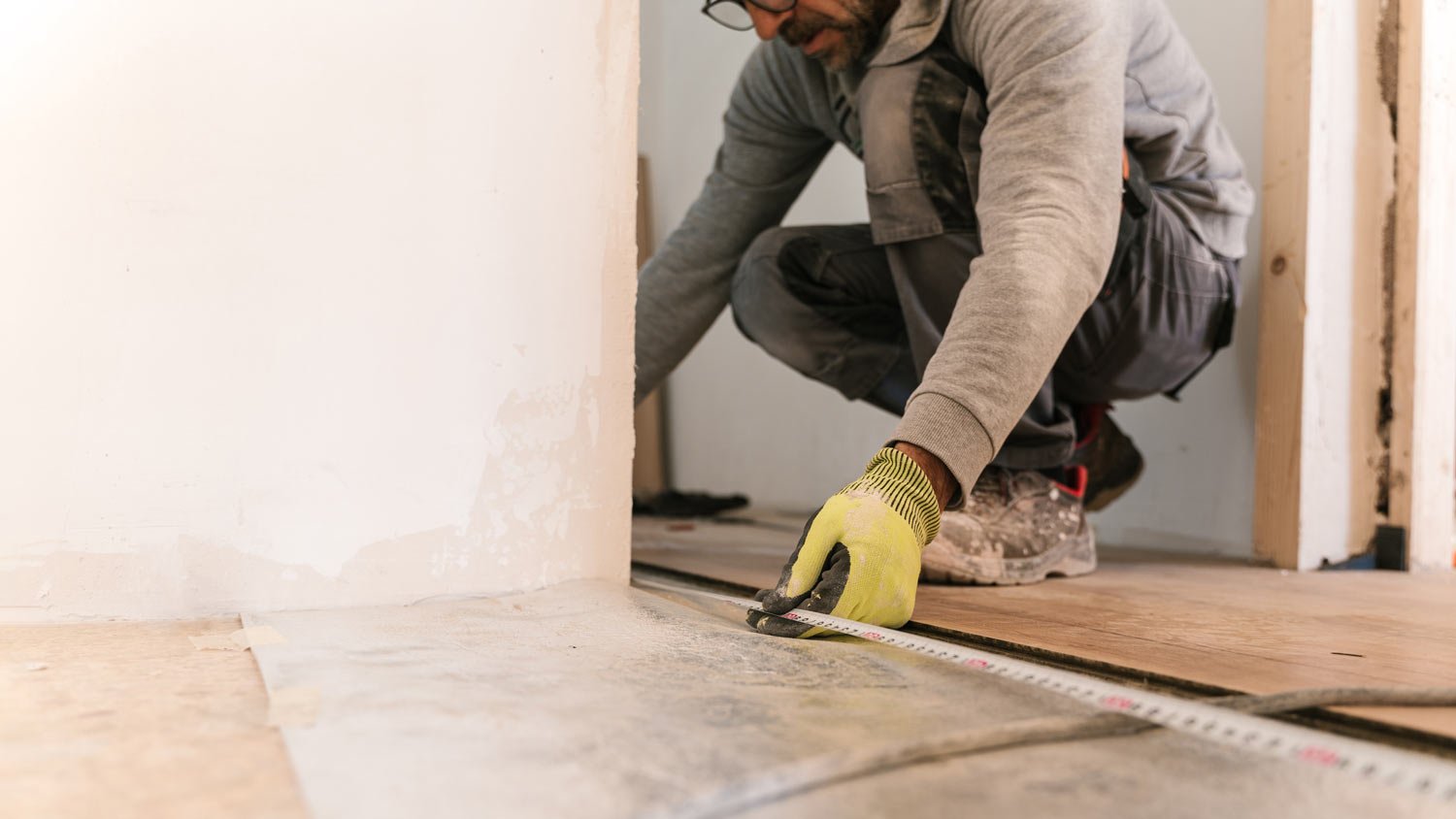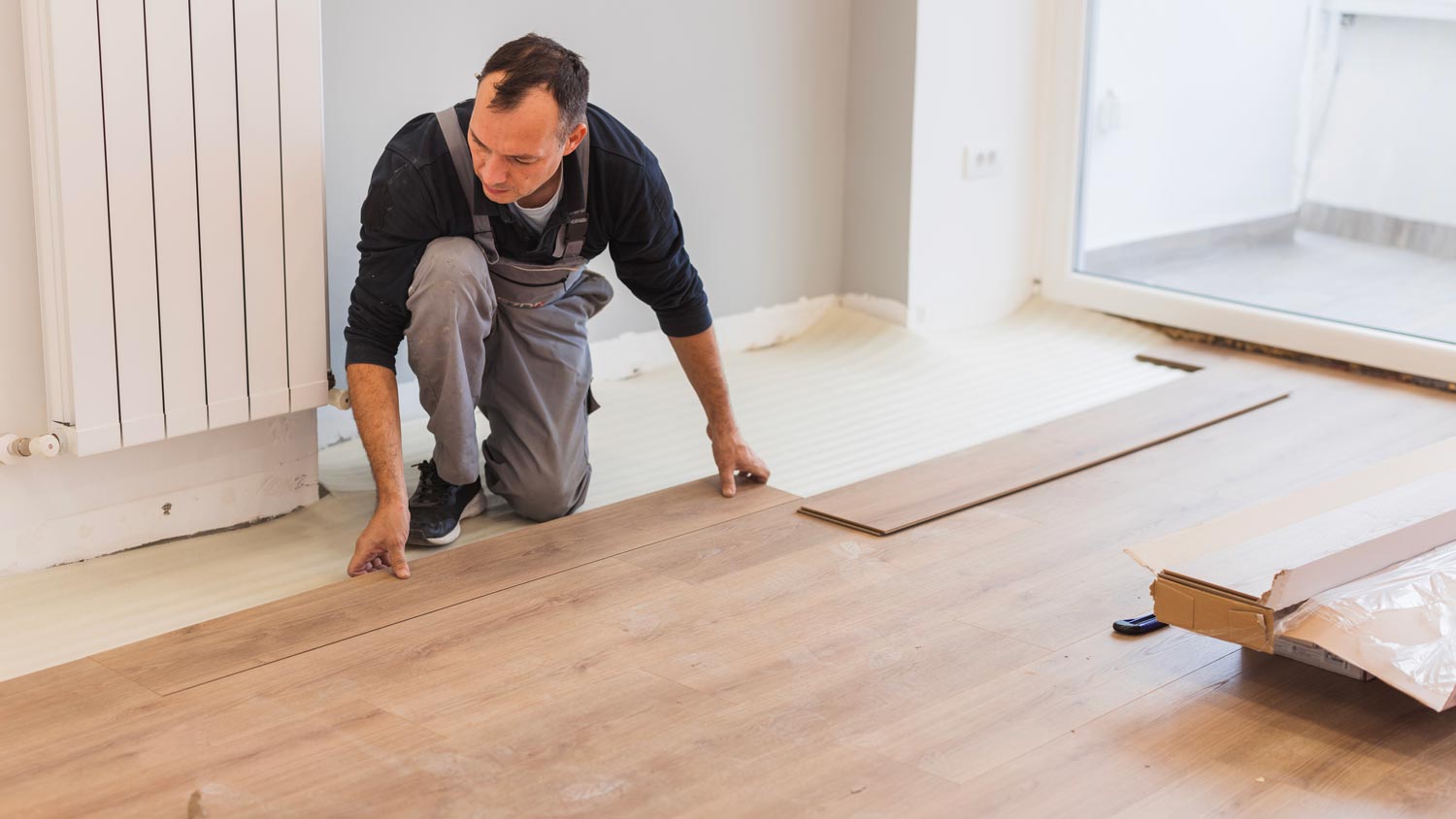
Updated flooring can make any room in your home feel brand new. Explore flooring installation costs in St. Louis, MO, from materials to labor costs.
You’ll be floored by how easy this is


Multiply a room’s length and width for total square footage.
Add or subtract additional areas, such as your closet floor or a bumpout.
Factor in 10% extra material to account for mistakes and future repairs.
Take careful measurements and use formulas for irregular shapes.
Installing new flooring costs an average of $3 to $22 per square foot.
New floors transform a space, giving it a fresh look and feel. But it can be hard to know how much flooring you need. Use this flooring calculator to figure out exactly how much flooring you need, including extra materials for mistakes and repairs. Plus, learn how much to budget for your project.
Using your room’s length and width, refer to the table below to estimate how much flooring you need. Flooring professionals recommend buying an extra 5% to 15% of your flooring material to account for installation mistakes, future repairs, and potential shortages if you need more in the future. Our chart uses 10% extra material as a guideline.
| Room Size in Feet | Square Footage | Flooring Needed in Square Feet (includes 10% extra) | Average Cost for Flooring |
|---|---|---|---|
| 6x10 | 60 | 66 | $200–$1,450 |
| 8x10 | 80 | 88 | $260–$1,940 |
| 11x12 | 132 | 146 | $440–$3,210 |
| 10x14 | 140 | 154 | $460–$3,390 |
| 12x18 | 216 | 238 | $710–$5,240 |
| 14x16 | 224 | 247 | $740–$5,430 |
| 15x20 | 300 | 330 | $990–$7,260 |
Using your room’s length and width, apply the following formula to determine how much flooring you need:
Flooring Needed (in square feet) = Length of space (in feet) x Width of space (in feet) x 1.1
Always round up to the nearest inch in flooring. This formula assumes you’ll need 10% extra material for installation errors and future repairs. For laminate, tile, or vinyl, you might only need 5%, so adjust the formula accordingly.
Keep in mind that not all flooring materials come in the exact square footage you need. A box of vinyl plank flooring might cover 20 or 26 square feet, so round up to ensure you have what you need.


If you don’t have floor plans for your house, you’ll need to take measurements of your room to determine its square footage.
Measure the room's length at its widest point with a tape measure, from one edge of the floor to the other. Round up to the nearest inch and write the number down. Then, measure the room's width at floor level at its widest point. Write the number down.
Many rooms have additional areas, such as a closet or bumpout. Measure the length and width of that area and either add or subtract it from your total square footage, depending on whether you want it to be part of your flooring project.
For rooms that aren’t square or rectangular, here’s how to figure out the square footage.
Circular spaces: Measure the diameter of the circle. Divide the diameter by 2 to find the radius. Square the radius (multiply it by itself), then multiply that value by pi (π = 3.14159265).
Trapezoid: Measure the length of the two parallel sides, and add them together. Measure the height of the trapezoid by measuring the distance between the two parallel sides. Plug in the dimensions to this formula: Square footage = ½ (length of the two parallel sides added together) x height.

A local flooring installation pro or general contractor is best for installing most types of flooring, including vinyl plank and carpet. If you’re tiling a bathroom or kitchen, opt for a local tile specialist with the skills and tools for meticulous prep, cutting, and installation. The cost to hire a flooring installation contractor ranges from $0.60 to $4 per square foot and ensures your floor is level and will last its whole lifespan.
From average costs to expert advice, get all the answers you need to get your job done.

Updated flooring can make any room in your home feel brand new. Explore flooring installation costs in St. Louis, MO, from materials to labor costs.

Mobile home floor repair costs are similar to flooring repair costs in other types of homes. It all depends on the damage, size, and materials.

OSB is a common material used for subflooring, wall sheathing, and roofing. Here’s a breakdown of how much OSB panels will cost for your project based on type and size.

Updated flooring can make any room in your home feel brand new. Explore flooring installation costs in Tampa, FL, from materials to labor costs.

There is more going on with moisture in your concrete than what meets the eye. Get to the bottom of it by testing moisture levels in your concrete floors.

Learn how much rubber playground flooring costs, including installation, material, and maintenance, plus how to save and choose the best option for your home.